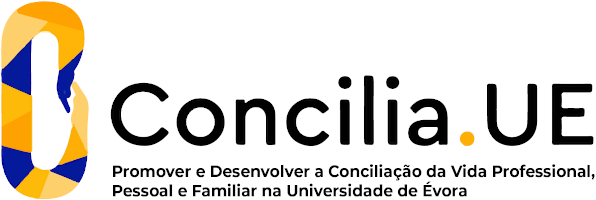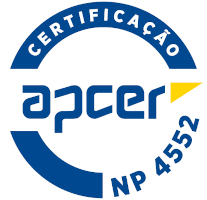2025
Exercise Prescription
Name: Exercise Prescription
Code: DES14909L
3 ECTS
Duration: 15 weeks/78 hours
Scientific Area:
Human Kinetics
Teaching languages: Portuguese
Languages of tutoring support: Portuguese, English
Regime de Frequência: Presencial
Sustainable Development Goals
Learning Goals
Knowledge:
1. Understand the underlying concepts of strength capacity, as well as the mechanisms of its manifestation and development;
2. Acquire knowledge of training variables that enable effective manipulation of the impact and magnitude of load in strength training programs
3. Master the principles of periodization and strength training prescription.
Skills:
1. Apply assessment and control protocols in strength training;
2. Develop personalized training programs based on clients' objectives and needs;
3. Demonstrate the ability to manipulate training variables to achieve desired impact and load magnitude.
Competencies:
1. Develop advanced strength training programs that incorporate multidisciplinary approaches and are capable of meeting specific objectives;
2. Convey methodological guidance objectively for safe and efficient execution of strength exercises;
3. Foster a mindset of continuous learning by staying abreast of the latest trends and research in strength training.
1. Understand the underlying concepts of strength capacity, as well as the mechanisms of its manifestation and development;
2. Acquire knowledge of training variables that enable effective manipulation of the impact and magnitude of load in strength training programs
3. Master the principles of periodization and strength training prescription.
Skills:
1. Apply assessment and control protocols in strength training;
2. Develop personalized training programs based on clients' objectives and needs;
3. Demonstrate the ability to manipulate training variables to achieve desired impact and load magnitude.
Competencies:
1. Develop advanced strength training programs that incorporate multidisciplinary approaches and are capable of meeting specific objectives;
2. Convey methodological guidance objectively for safe and efficient execution of strength exercises;
3. Foster a mindset of continuous learning by staying abreast of the latest trends and research in strength training.
Contents
1. Materials and Strategies for Strength Training: Constant and Variable Resistance
2. Safety and Efficiency in Strength Exercise Execution: Advanced Practice
3. Prophylactic Measures and Habit Formatio
4. Execution of Single and Multi-Articular Exercises in the Context of Strength Training
5. The Role of Grips, Breathing, and Development in the Execution of Strength Exercise
6. Anatomy and Biomechanics in Strength Training
7. Agonist, Antagonist, Synergist, and Stabilizer Muscles
8. Ranges and Planes of Motion
9. Periodization and Planning for Strength Training
10. Assessment Models (Isotonic, Isokinetic, and Isoinertial)
11. Linear and Nonlinear Training Model
12. Acute and Chronic Adaptations to Strength Training
13. Methodological Guidelines for Developing Neuromuscular Capacity
14. Endurance, Maximum Strength, Explosive Strength, and Rapid Strength
15. Sets, Repetitions, Execution Velocity, Rest Times, and Exercise Sequence
2. Safety and Efficiency in Strength Exercise Execution: Advanced Practice
3. Prophylactic Measures and Habit Formatio
4. Execution of Single and Multi-Articular Exercises in the Context of Strength Training
5. The Role of Grips, Breathing, and Development in the Execution of Strength Exercise
6. Anatomy and Biomechanics in Strength Training
7. Agonist, Antagonist, Synergist, and Stabilizer Muscles
8. Ranges and Planes of Motion
9. Periodization and Planning for Strength Training
10. Assessment Models (Isotonic, Isokinetic, and Isoinertial)
11. Linear and Nonlinear Training Model
12. Acute and Chronic Adaptations to Strength Training
13. Methodological Guidelines for Developing Neuromuscular Capacity
14. Endurance, Maximum Strength, Explosive Strength, and Rapid Strength
15. Sets, Repetitions, Execution Velocity, Rest Times, and Exercise Sequence
Teaching Methods
The content approach will center on developing students' capacity to learn autonomously and collaboratively in the construction of knowledge across various contexts, promoting problem-solving skills, critical thinking, creativity, communication, and collaboration. Students will be exposed to the latest research, utilizing digital tools for knowledge production, making the process more efficient and adaptable to diverse needs.
Teaching methodologies will focus on student-centered learning, specifically Team-Based Learning and/or Problem-Based Learning and/or Project-Based Learning, through the formation of small working groups to discuss and solve practical problems under the supervision of a tutor, with the aim of stimulating critical thinking.
Teaching methodologies will focus on student-centered learning, specifically Team-Based Learning and/or Problem-Based Learning and/or Project-Based Learning, through the formation of small working groups to discuss and solve practical problems under the supervision of a tutor, with the aim of stimulating critical thinking.
Assessment
Continuous assessment is the recommended assessment method and includes the following components:
CA1. 30%. Classroom tasks: theoretical and practical assignments, individual/group, carried out and discussed in or related to content (40%).
CA2. 50%. Training/exercise sessions: planning, classroom/student intervention/dynamic, and subsequent critical analysis of a training session. Evaluation criteria will be discussed with the students.
CA3. 20%. Training session report.
The final assessment (regular, resit, and special assessment periods) consists of two components:
FA1 60% - Written exam.
FA2 40% - The same work considered in CA2 and CA3. These assessment components are common to the continuous assessment method (as per the UÉ Academic Regulations), with the practical presentation component taking place during the regular period.
Approval requires a minimum final classification of 9.5
CA1. 30%. Classroom tasks: theoretical and practical assignments, individual/group, carried out and discussed in or related to content (40%).
CA2. 50%. Training/exercise sessions: planning, classroom/student intervention/dynamic, and subsequent critical analysis of a training session. Evaluation criteria will be discussed with the students.
CA3. 20%. Training session report.
The final assessment (regular, resit, and special assessment periods) consists of two components:
FA1 60% - Written exam.
FA2 40% - The same work considered in CA2 and CA3. These assessment components are common to the continuous assessment method (as per the UÉ Academic Regulations), with the practical presentation component taking place during the regular period.
Approval requires a minimum final classification of 9.5
Teaching Staff
- Bruno Emanuel Nogueira Figueira [responsible]





















